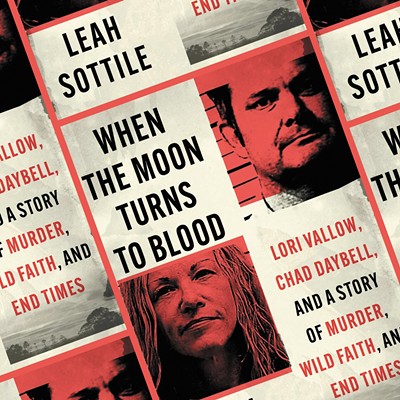Lowered taxes? Balancing the budget? Pulling out of Iraq? What about stem-cell research, gay marriage or health care? Oh, all that rubbish. Sure, those are the issues that are important to any elected official -- but, after all, this is politics. And in politics, it's all about getting elected.
So when it comes to campaigning for office, it seems that getting elected isn't really about "the issues" anymore. In fact, it's those issues that divide voters -- so why not remain as neutral as possible in the eyes of your constituents? This is where those brightly colored, star-studded and stripe-adorned yard signs come in. Making such eye-catching, issue-neutral sign is an art in itself.
Jerry Quinn, owner of the Quinn Group advertising agency, thinks that the political signs that spatter the roadsides, parking lots and grassy front lawns of Spokane are just a way for candidates to get name recognition.
"All these signs tend to do is remind people that, 'Hey, my name is Joe Blow and I am running for office,'" he says.
But it's name recognition that can win some votes, particularly from those voters who are unfamiliar with the issues or any particular candidate. Those people are more apt to simply fill in the blank next to any name that sounds familiar.
"These signs aren't designed to tell you what the candidates believe in," Quinn points out.
In fact, letting any information other than a party affiliation come through on a yard signs seems to be taboo. Staying as neutral as possible with the shiniest, prettiest sign is the key here. And Spokane is no exception to this form of political one-upmanship.
Take Don Barbieri, for example. Not only has the Democratic congressional candidate remained completely neutral on his signs, but he also hasn't strayed much from the typical red-white-and-blue color scheme. And along the same "proud to be an American" suggestion, Barbieri has gone so far as to design his signs in such a way that makes his name an integral part of the American flag. From his sign, he's showing voters that, if elected, he'll be the star to our stripes. Quinn says that this form of signage is pretty standard.
"That's a bland, 'Here I am. I've got a blue-and-white sign and my name is Barbieri,'" he says. "The question that I would ask is, 'Who is Barbieri, and what does he stand for?'"
But like Barbieri, none of the candidates with signs around town provides any inkling as to why they are running or what they'll do for the voters once elected.
Cathy McMorris, a Republican congressional candidate, has one of the best-looking signs from a designer's perspective, Quinn thinks.
"I think it's one of the nicest ones," he says. "Using the color as a background is more effective than using it as the lettering. Your eye reads the reverse of what you want to see. You tend to have to read around the lettering on a white sign. I tend to like having the strong colored background with the white lettering."
It seems that Barbieri, McMorris and Shaun Cross, another congressional candidate, knew what they were doing when their signs were being designed. And all three stuck to the issue-neutral, red-white-and-blue signs. The American colors are also used on George Nethercutt's signs, as well as on Todd Mielke's. But in Quinn's opinion, using red, white and blue on a political sign is not going to get any more looks because of what they stand for. In fact, Quinn thinks that using those colors can make signs look almost too much alike.
Though he strays from the rules of white lettering on a colored background, Republican candidate Larry Sheahan still has a good sign in Quinn's opinion. Sheahan's white sign boasts blue lettering with a shooting green star above his name. But it's that deviation from the norm that Quinn says could be helpful in getting Sheahan some name recognition.
"Signs tend to all look the same," he says. "You cover up the logo, and you can't tell who it is."
Quinn also likes signs like Dino Rossi's yellow-on-blue placards. Adding personal touches like the cursive lettering of Rossi's first name are also good for catching glances from those passing by, he says.
Quinn says that he'd like to see more specific personal touches to these signs -- things like photographs or campaign slogans.
"If I was running for office, I'd show a dime [on my signs] and my slogan would be 'Not another dime's worth of taxes,'" he says. "And by that statement, you see where I stand."
But as it stands, Quinn thinks that these vague signs are just another sign of apathy among candidates and citizens alike.
"They are not creative. They are just run-of-the-mill. They're safe," he says. "Nobody is going to get excited about [them], and that's what's missing: The fire in the belly of what is happening to our country."
















